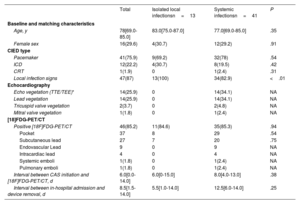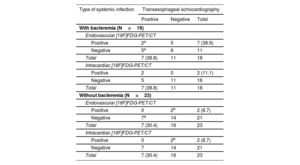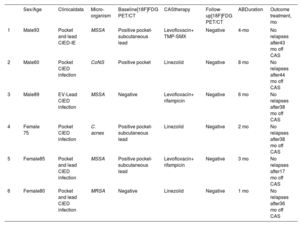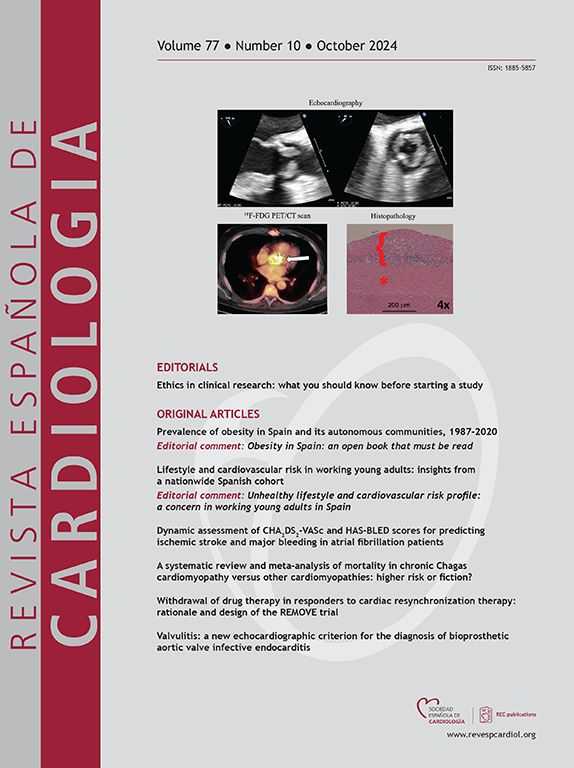
The role of [18F]FDG-PET/CT in cardiac implantable electronic device (CIED) infections requires better evaluation, especially in the diagnosis of systemic infections. We aimed to determine the following: a) the diagnostic accuracy of [18F]FDG-PET/CT in each CIED topographical region, b) the added value of [18F]FDG-PET/CT over transesophageal echocardiography (TEE) in diagnosing systemic infections, c) spleen and bone marrow uptake in differentiating isolated local infections from systemic infections, and d) the potential application of [18F]FDG-PET/CT in follow-up.
MethodsRetrospective single-center study including 54 cases and 54 controls from 2014 to 2021. The Primary endpoint was the diagnostic yield of [18F]FDG-PET/CT in each topographical CIED region. Secondary analyses described the performance of [18F]FDG-PET/CT compared with that of TEE in systemic infections, bone marrow and spleen uptake in systemic and isolated local infections, and the potential application of [18F]FDG-PET/CT in guiding cessation of chronic antibiotic suppression when completed device removal is not performed.
ResultsWe analyzed 13 (24%) isolated local infections and 41 (76%) systemic infections. Overall, the specificity of [18F]FDG-PET/CT was 100% and sensitivity 85% (79% pocket, 57% subcutaneous lead, 22% endovascular lead, 10% intracardiac lead). When combined with TEE, [18F]FDG-PET/CT increased definite diagnosis o fsystemic infections from 34% to 56% (P=.04). Systemic infections with bacteremia showed higher spleen (P=.05) and bone marrow metabolism (P=.04) than local infections. Thirteen patients without complete device removal underwent a follow-up [18F]FDG-PET/CT, with no relapses after discontinuation of chronic antibiotic suppression in 6 cases with negative follow-up [18F]FDG-PET/CT.
ConclusionsThe sensitivity of [18F]FDG-PET/CT for evaluating CIED infections was high in local infections but much lower in systemic infections. However, accuracy increased when [18F]FDG-PET/CT was combined with TEE in endovascular lead bacteremic infection. Spleen and bone marrow hypermetabolism could differentiate bacteremic systemic infection from local infection. Although further prospective studies are needed, follow-up [18F]FDG-PET/CT could play a potential role in the management of chronic antibiotic suppression therapy when complete device removal is unachievable.
Keywords
Identify yourself
Not yet a subscriber to the journal?
Purchase access to the article
By purchasing the article, the PDF of the same can be downloaded
Price: 19,34 €
Phone for incidents
Monday to Friday from 9am to 6pm (GMT+1) except for the months of July and August, which will be from 9am to 3pm









